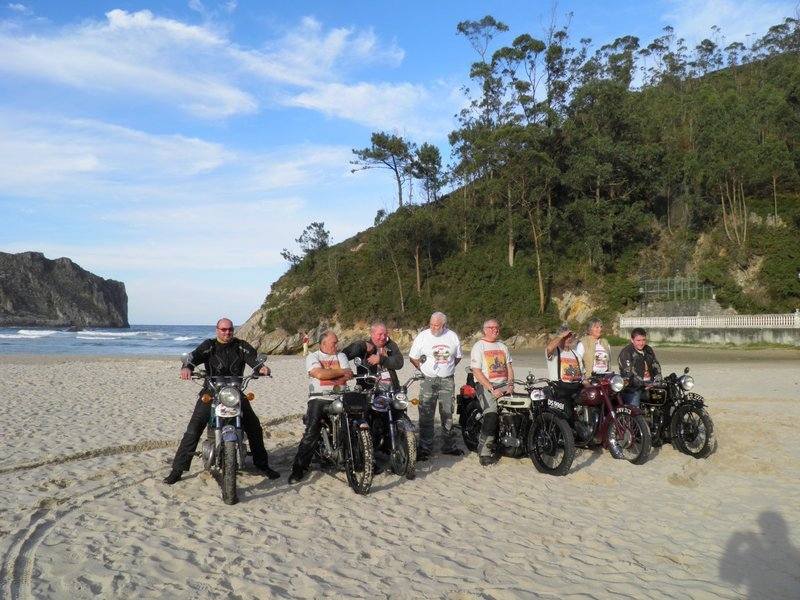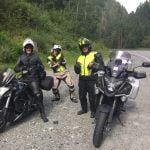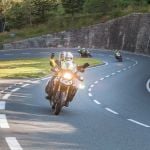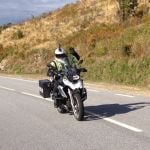| | Biker News - Regularly updated
Category: Random
-
Haynes International Motor Museum is delighted to announce the appointment of Christopher Haynes as CEO. Following a recruitment process and subsequent approval by the Independent Trustees of the Charitable Trust, Christopher assumed responsibility at the end of 2015. He succeeds Marc Haynes who has stepped down to concentrate on his private motorsport business.
Trustee Neville Sanders commented “It is marvellous that the museum has been able to recruit Christopher to the role of CEO; it provides continuity and strong leadership at this important time. His experience, dedication and proven track record speak for themselves.”
Christopher Haynes commented; “I am obviously delighted to be appointed CEO of the Haynes International Motor Museum. We are experiencing an exciting period of sustained growth for the museum, the like of which has never been seen before and reflects the huge contribution and legacy that Marc Haynes created. We have several projects for the short and medium term that, together with a focus on our core charitable objectives, will help cement our reputation as a leading global motor museum. I would like to thank the Trustees for their vote of confidence in my abilities and I look forward to working with them, the senior management, staff and volunteers.”
Christopher has an unparalleled understanding of the museum; having worked in every department and at all levels of seniority from Apprentice to Director. In 2008 he became a Trustee on the Charitable Trust that runs the museum. It was in this position that Christopher played a significant role as part of the project management team that completed the extensive £6m development of the museum, which opened in 2014.
Mike Penn, Founding Curator and Trustee, commented; “Chris’s heart is intrinsically linked to the museum and the skills and leadership that he demonstrated during the development proved that he is the ideal person to lead the museum”.
-
The future of the London Motorcycle Museum is in doubt after its landlord, Ealing Council, reduced its rate subsidy resulting in a potential yearly bill of £30,000 for next year. Not only that but they have backdated the demand, meaning the museum is already in arrears to the tune of over £10,000!
Blaming the decision on government cutbacks, the council say it has no choice and it is not singling out the museum, recognising its contribution towards putting the area on the map and bringing tourism income to the area.
However, kind words have not helped and the trustees have come to the difficult decision of raising entrance prices and launching an appeal to help pay the bills for the next year whilst working on other revenue possibilities for the longer term that will allow the museum to remain.
They are reluctant to move outside London, where property prices and rates are cheaper, as museum founder Bill Crosby is passionate about providing a motorcycle museum for the capital – the only one in London. He is fighting to prevent the doors closing and breaking up the collection of nearly 200 bikes including many rarities and prototypes.
The news came as a harsh blow as the museum volunteers recently put in a lot of work improving the inside of the old farm buildings to showcase the Derek Minter collection of trophies as well as being recognised by the National Lottery who had awarded a small sum of money to the museum to allow it to promote itself on a wider scale.
The trustees have vowed to explore all legal options, but in the meantime are asking for donations, however small, to be made to the ‘Just Giving’ page that has been set up (you can find details on Facebook and the LMM website) or for people to visit the museum over the next few months and maybe donate directly.
Donate here
-
there is something for everyone on the Magellan Motorcycle Tours 2016 itinerary. Destinations include France, Belgium, Germany, Austria, Switzerland, Italy, Croatia, Slovenia, Bosnia, Spain, Portugal, Cuba, Vietnam, Laos and more...
OFFER - €100 off any Escorted Tour booked for 2016 when quoting BIKERGUIDE16.
The Escorted Tours in Europe are run by multilingual, first aid trained guides and are all comprehensively planned and led, leaving you with nothing more to do than enjoy the roads, scenery, great food and accommodation.
Germany: Harz Mountains, Dambusters, Colditz, Nurburgring and Vosges Mountains. April 27th – May 7th 2016. 11 days From £999
Italy: Lakes and Alps tour. July 2nd – July 12th 2016. 11 days From £1099
Corsica, France: Grand tour, Alps and Volcanoes, July 15th – July 28th 2016. 11 days from £1199
Spain: Northern route, Picos & Northern Portugal. October 9th – October 20th 2016. 12 days From £1199
For those of a more adventurous bent why not try a Fly Ride Tour? From mixed terrain and paved trips to Vietnam and Laos to 5 * Harley Davidson tours in Cuba led by Che Guevara's son, all their Fly Ride tours include meals, accommodation, bike hire and insurance. They also offer a range of Self Guided Tours to over 15 destinations, ideal for independent travel and arranged for the dates you desire.
Any tour you take will not only be a great holiday, but truly an experience to remember!
Based in Cornwall with tours to France, Belgium, Germany, Austria, Switzerland, Italy, Croatia, Slovenia, Bosnia, Spain, Portugal, Cuba, Vietnam, Laos and more…
Call today to discuss your next trip: 01872 211 456
-
After winning the Best Feature Film Award in New York at the 2015 Motorcycle Film Festival (Sept 23-27th, 2015), Dream Racer is now being nominated at the 2016 Portland Motorcycle Film Festival (Jan 29-30th).
This festival is packed with great films including Moto 7 featuring the best Motocross and Supercross riders in the world, the IOM TT - a legendary 37.7 mile race on the Isle of Man, and the new Hitting the Apex Film narrated by Brad Pitt featuring world's champs Jorge Lorenzo, Marc Marquez, Dani Pedrosa, Valentino Rossi, Casey Stoner, as well as the late Marco Simoncelli.
"We are excited to showcase a different kind of extreme racing with Dream Racer and the Dakar Rally - and to be against such great productions is an honour. However Dream Racer is a case of David against Goliath(s) in every sense of the word, but we trust that the depth of the Dream Racer story will win the heart of the audience" says Christophe Barriere-Varju (the subject of the film).
Dream Racer won awards in Los Angeles, Barcelona, New Delhi, Milan, and New York, and has been internationally acclaimed by its viewers worldwide (read testimonials).
The Dream Racer story is based on the famous Dakar Rally, the most extreme and dangerous race on earth where racers brave extreme temperature in the harshest deserts on the planet. A 15 days, 10,000km (6,200 miles) desert race dubbed insanity on wheels where each year since 1979, and with an attrition rate of 50%, racers facing injuries and death attempt the impossible.
The Dream Racer film shows The Dakar Rally in its purest form – no sponsors, no multi-million dollar team, not even a mechanic – just one man, a motorbike, his tool-roll, and the world’s most dangerous motor race. Far more than just a motorbike movie, Dream Racer is a call to arms for anyone who has ever dreamt of doing anything – a spine tingling antidote to the fear of life passing you by unfulfilled.
All of us have dreams and desires, but sometimes they remain just that, dreams, lost in a schedule of a tomorrow that never comes. Dream Racer is a story of dreams, determination, and extreme resilience to make it happen at all cost - a story guaranteed to make you question your real purpose in life.
Dream Racer has also been subtitled in Spanish, French, Italian, Portuguese, German and Russian and is available for acquisition by TV Networks. Dream Racer is available worldwide on DVD, Blu-Ray, and Video-on-Demand at www.dreamracer.tv
-
From 1st January 2016 it will be compulsory for all motorcyclists to carry Gilet de haute Visibilité (High Visibility Vest to those not fluent in French ;) ) and wear them in the event of an emergency/breakdown, whilst in France.
A fine of €11 will be given if you are spot checked by police and you do not have one carried on your motorcycle and if you are not wearing it at the roadside (in the event of a breakdown/emergency and/or on the hard shoulder) the fine is €135. Please note this also applies to the pillion passenger. 
This issue has been talked about for a few years, but with protests from the FFMC – French Federation of Angry Bikers, the (former) French Interior Minister, Claude Guéant did not implement it and for a time compulsory reflective straps around the arm were worn instead. However with a rise in road deaths on French roads the law has been brought in.
Other rules
Motorcycles must display dipped headlights (even in broad daylight - Ed; "Harley owners will be happy then!"), along with carrying a full set of replacement bulbs.
French law also states you have reflective stickers on your helmet - (four of) front, back and one on each side. We have found that this is a French law and not a European law, meaning it 'should' only apply to a French citizen and with a motorcycle registered in France, however would you really want to argue this fact in your pigeon French to the local Gendarme on a summer afternoon in a picturesque village?
Great riding and Biker Friendly Places to stay
Wheather it is your first trip to France and you are to explore the historical and emotional WW1 and WW2 sites, museums and war graves in Normandy, or you are heading down to the South of France, for the renowned Mediterranean coastline, give yourself time to enjoy the lovely minor roads, quaint villages and open countryside - avoiding the fast pasted motorways and saving the cost of the tolls!
It may be tempting to just pack your kit-bag onto your bike and just head off, however it is the experienced traveller that plans the routes and where to stay prior and in this modern age it has never been easier...
For example if you give yourself a daily how many miles you want to travel, along with places you really want to visit/stop at, you can then plan your route via Google Maps, pin-pointing an area you wish to stay and then source the accommodation prior. Many do like to just be spontaneous, however once you have ridden in France, during bad weather or when a festive/bank holiday was on and have tried to find room in the proverbial Inn, you will wish you had planned and booked prior.
Once the route is planned and places to stay booked, you can then load this information onto a Sat-Nav to help you get there. We are not saying to purely use this technology to get you there alone, however it is a far easier (and safer) way to tour on roads you do not know, with a plan and schedual to adhere to.
On THE BIKER GUIDE we have lots of Biker Friendly Accommodation in France and many with British owners who are happy to give advice on routes, where to go and more...

A day at the beach, from Countryside Holidays in France
A Low Emission Zone has also been introduced in Paris, initially affecting only older (Euro 1) trucks and buses. Restrictions will be extended to all older vehicles from 1 July 2016 and tightened progressively between 2017 and 2020.
More information for Urban Road Tolls, Traffic Limited Zones and Traffic Restrictions to improve air quality, reduce traffic congestion and make historic city centres attractive to tourists can be found on www.urbanaccessregulations.eu
|










